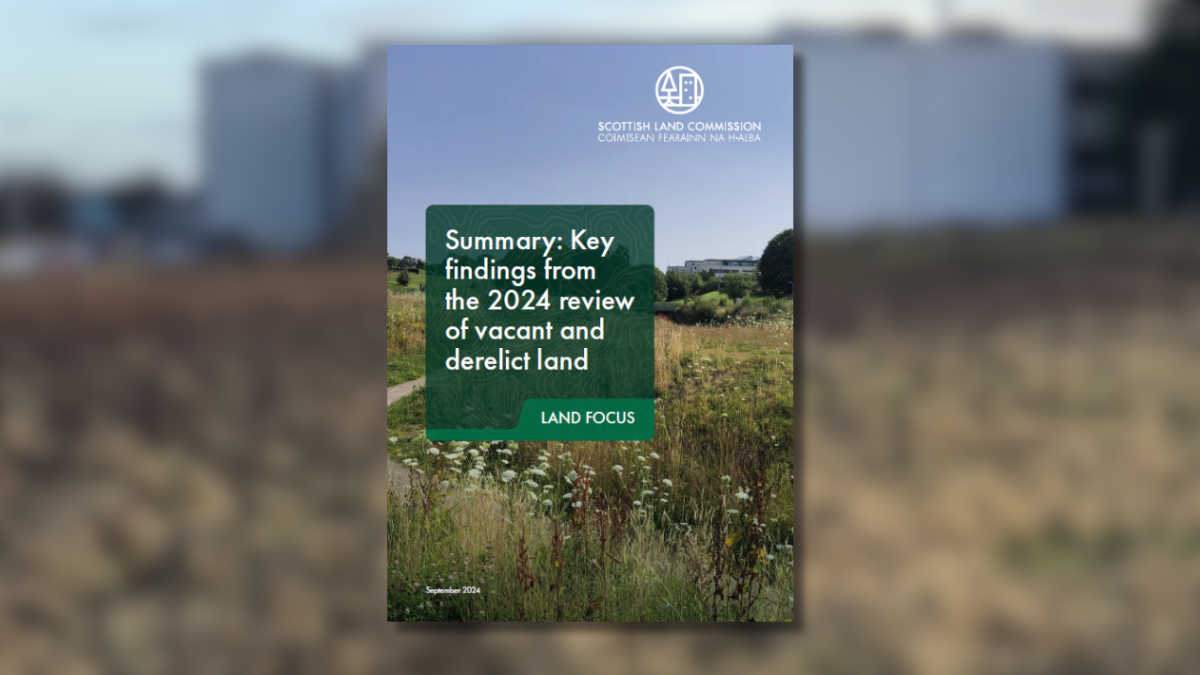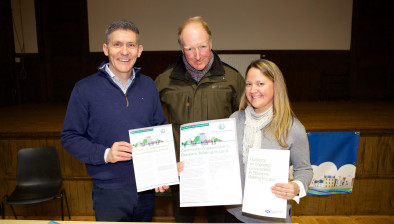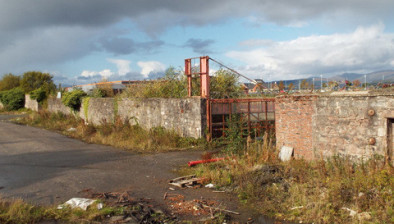Steady progress being made in tackling Scotland’s vacant and derelict land, report finds

The Scottish Land Commission has today released a new report conducted by commercial property consultants, Ryden, that reviews the progress made in addressing Scotland’s legacy of vacant and derelict land (VDL) four years on from recommendations from the Commission’s VDL Taskforce.
The findings show significant strides in repurposing vacant and derelict land for productive use, while also identifying key areas that require further attention to sustain and accelerate progress.
The report indicates a steady decline in vacant and derelict land across Scotland, with a 27% reduction in registered VDL from 2016 to 2022. Housing projects have been a major contributor, accounting for 51% of VDL site re-use, 37% of overall areas of VDL sites.
A notable success story within the report is the re-use of challenging sites, particularly urban areas that have been unused since 2000 or earlier. Since the Scottish Land Commission’s targeted focus on these “DUSTEs” (Derelict Urban Sites Unused Since 2000), 20% of such sites have been re-purposed, with an additional 53 sites removed from the register due to naturalisation.
The report also highlights the success of several initiatives that were recommendations from the Scottish Land Commission’s VDL Taskforce. These include the King’s and Lord Treasurer’s Remembrancer (KLTR) Ownerless Property Transfer Scheme (OPTS), launched in March 2024, which enables the transfer of ownerless properties to community groups to reclaim and repurpose. The launch of the Scottish Vacant and Derelict Land Hub by the Scottish Government this summer is also a big step making it easier to identify and invest in VDL sites through a publicly accessible online map, one of the key recommendations made in 2020.
Chief executive of the Scottish Land Commission, Hamish Trench, commented: “Encouraging progress is being made by many organisations tackling Scotland’s legacy of vacant and derelict sites and delivering on the recommendations of the VDL Taskforce. There is more to do though, particularly to sustain this progress given current economic and financial challenges.
“As well as tackling longstanding sites, we must avoid creating a new legacy of vacant property as economic and market conditions change.”
The report warns of the risk of increased vacant buildings in town and city centres due to changing shopping and work patterns. To prevent this, the Commission suggests a proactive approach is needed including a focus on wider economic impact and value in land and investment decisions.
To maintain momentum, the report outlines several recommendations:
- Support for Private Developers: A package of measures to support re-use of land and buildings to make this viable for private developers.
- Regional Funding: Building on long-term regional funding, rather than shorter term challenge funding, allowing for a more strategic approach to land re-use.
- Wellbeing Approach: Encouraging public bodies to adopt a wellbeing approach to land and building decisions to prevent the creation of new VDL.
- Community Support: Enhancing support for community-led initiatives to re-use VDL, particularly in urban areas, and improving transparency in land ownership.
- National Greenspace Initiative: Developing a national programme to support the re-use of VDL as greenspace, which is essential for climate change mitigation and improving public access to nature.
Hamish Trench added: “Tackling vacant and derelict land matters because it impacts lives across Scotland, half of us live within 1km of a vacant and derelict site, more in disadvantaged areas. The sites impact on physical and mental health, environmental quality, pride in place and of course are a significant lost economic opportunity.”









